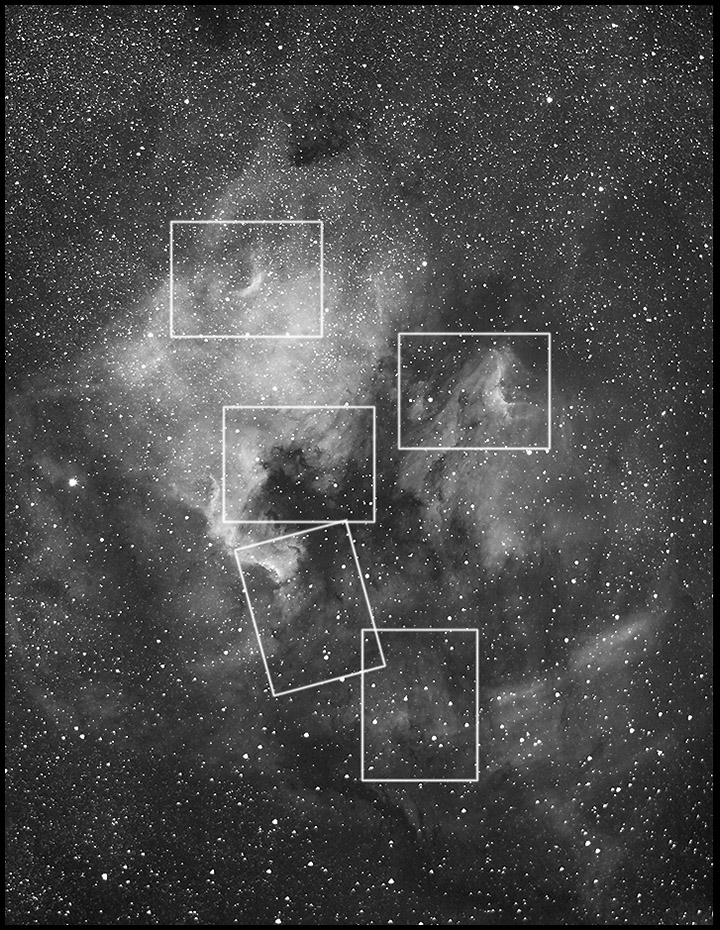The Starry Night, 237 :: home :: |
Travels in North America
|
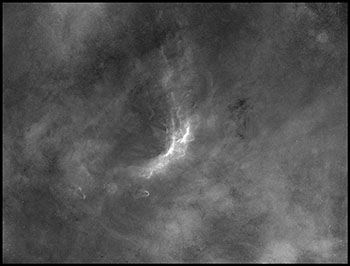 |
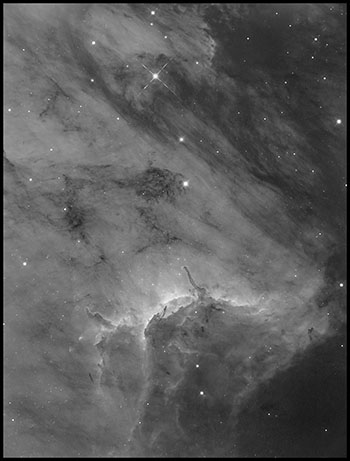 |
 |
Details in the Vicinity of NGC 7000 |
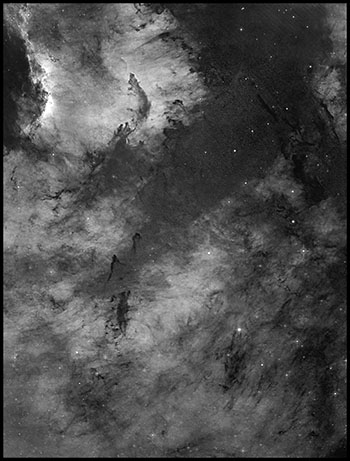 |
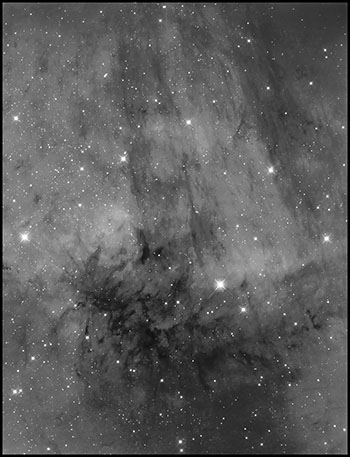 |
The Bajamar Star. I'd always supposed this entire complex was illuminated by Deneb, a first magnitude star just off the right side of the overview image at top. I and Edwin Hubble thought so. It turns out that Deneb isn't nearly hot enough to provide the ionizing radiation required to light up and sculpt so much space, so the search was on for another candidate. The star turned out to be a very young O-type giant with a surface temperature of around 40,000K. The heavily obscured star lies behind a dense cloud of dust that blocks all but one out of every 1,600 photons it sends our way. The Bajamar Star is the 11th or 12th magnitude spark shining in the "Bahamas" dead center in this widefield photo:
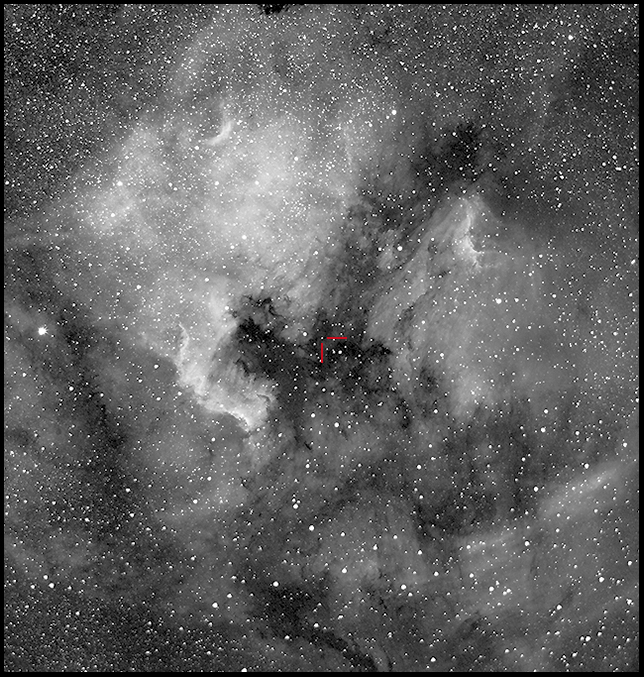
It's also visible just inside the right edge of the close-up of the Northern Gulf.
The paper that identified the star appeared in "Astronomy and Astrophysics" in 2005. Fifteen years later, data from the Gaia satellite allowed the star's nature and place in space to be refined in this paper. In 2016, Apellaniz et al (11 more authors) christened it "the Bajamar Star" in the course of a survey of O-type stars published in the ApJ. This is footnote 19: "We adopt the name 'Bajamar Star' for the object due to its position relative to the North America Nebula, just to the east of the 'Florida Peninsula.' 'Islas de Bajamar,' meaning 'low-tide islands' in Spanish, was the original name of the Bahamas islands because many of them are only easily seen from a ship during low tide."
For a dose of doubt about its etymology, consult the ultimate source of truth on the intertubes: "Tourist guides [to the Bahamas] often state that the name comes from the Spanish baja mar ('shallow sea'). Wolfgang Ahrens of York University argues that this is a folk etymology. Alternatively, it may originate from Guanahani, a local name of unclear meaning." Thus spake Wikipedia.
The dozen authors of the 2016 paper identify it as a double star based on the variability of certain spectral lines and its inconstant radial velocity.
:: top ::
© 2022, David Cortner
